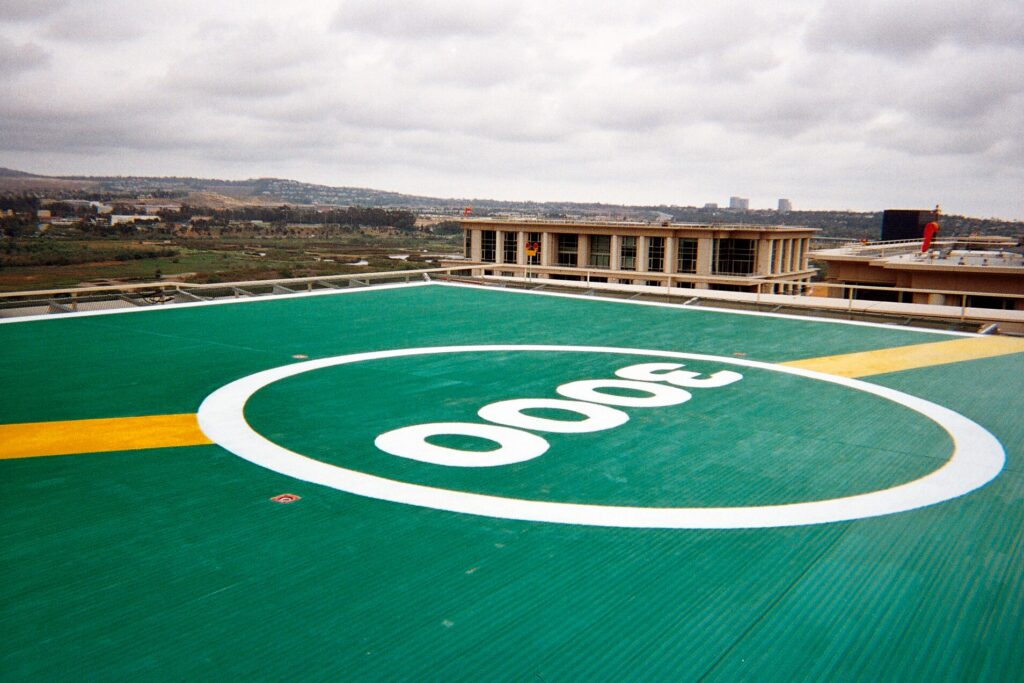Medical Center Helipads are crucial to health services
In the fast-paced world of emergency medical services, hospital helipads are not just a convenience but a necessity. These specialized landing areas are the unsung heroes in healthcare, designed to save lives when every second counts. Whether it is a concrete ground helipad or an elevate aluminum helipad, having this infrastructure allows for a superior standard of care.
What is a Hospital Helipad?
A hospital helipad is a designated landing area within a medical center’s premises, specifically tailored for medical emergency helicopters. The size of the helipad is often determined by the design helicopter intended to use it, ensuring a perfect fit for safe landings and take-offs.
Engineering Challenges: The Aluminum Advantage
Creating a hospital helipad is a feat of engineering. It’s not just about laying down a flat surface; it’s about considering factors like weight capacity, wind direction, and how close the helipad is to the emergency room. These landing pads are also subject to stringent safety guidelines, including those set by the Helicopter Safety Advisory Conference (HSAC) and the Federal Aviation Administration (FAA).
One of the primary challenges in engineering a hospital helipad is ensuring that the building or hospital structure can handle the weight of both the helipad and the helicopter. This becomes even more critical when the helipad is situated on a rooftop. The structural integrity of the building must be assessed to determine where supports should go to effectively distribute the weight.
This is where the choice of material becomes crucial, and aluminum offers a compelling advantage. Its reduced weight compared to traditional materials not only makes it easier to install but also minimizes the stress on the supporting structure. Additionally, aluminum’s easier maintenance and corrosion resistance make it an excellent long-term investment for hospital helipads.
Why Hospitals Need Helicopter Pads
Rapid Response Time
Helicopters can traverse large distances in minimal time, making them invaluable for patients requiring immediate medical intervention, such as those suffering from strokes or severe trauma. Those injured in hard to reach places would be able to receive treatment quicker
Universal Accessibility
Hospital helipads ensure that medical centers are accessible even from remote or congested areas, offering an alternative and faster route for patient transport. Again, it also allows for more timely treatment of those injured in remote areas. When seconds can count, making it as easy and quick as possible for the patient to receive care will increase the likelihood of a positive outcome.
Onboard Medical Facilities
Air ambulances come equipped with state-of-the-art medical facilities, allowing for life-saving treatments to be administered during the flight to the medical center. Typically the care provided there should be as good as aa patient would receive in an ambulance.
Lighting Systems: A Case for TDPM Lights
While helipads require specialized lighting systems, there’s a disparity between the USA and Europe in terms of safety standards. America and Europe have the standard lights in common. All helipads will be equipped with perimeter lights, floodlights, status & repeater lights, and possibly a Hapi system and windcone. In Europe, Touchdown and Positioning Markings (TDPM) lights, represented by a circle and an ‘H,’ are mandatory for nighttime flights on rooftop helipads. Adopting these standards in the USA would enhance safety and should be considered for future regulations. This regulation change would likely have to come from the FAA; however, there is nothing stopping hospitals from getting ahead of any future changes in regulation and increasing safety by adopting this practice earlier.
Safety Protocols: The Role of Hospital Teams
Once a hospital helipad is installed, the responsibility for its operation, including landings and patient transfers, falls on the hospital. A well-trained hospital team with robust policies can significantly impact the well-being of patients flown in for emergency care. The hospital must implement procedures that align with best practices to ensure the safe and efficient use of the helipad. This ensures that the aide given to patients being flown in for emergency care will be as optimal as possible.
Fire Suppression: Moving Towards Safer Alternatives
Traditionally, AFFF foam has been used in fire suppression systems on helipads. However, due to its environmental and health risks, the industry is moving towards safer alternatives like water mist systems. Typically Foam monitors with bladder tanks are used for hospital helipads. The industry is moving towards the use of Deck Integrated Fire Fighting systems. These systems have nozzles fitted into the decking so that the water and foam sprays up from the deck. This is believed to be the superior method and is seeing greater usage lately.
Hospital Helipads Save Lives
Hospital helipads are far more than just a landing zone; they’re a critical component of a medical center’s emergency response system. With the right engineering solutions, lighting systems, and operational protocols, these helipads can serve as life-saving platforms, ensuring that medical care is accessible when it’s needed the most. Ensuring these helipads aare accessible to every hospital in America should be the goal. The UK is doing something similar to this with their Help Appeal program which raises funds for UK hospitals to add helicopter landing pads. This is an excellent model that should be replicated around the world.

